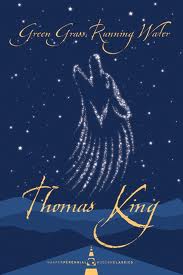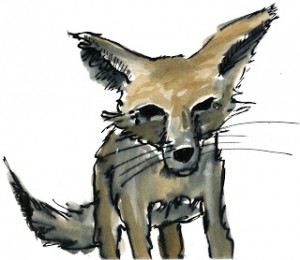This week, I’ll be attempting to connect the stories in Green Grass, Running Water from page 348 to 360. Throughout the novel, King’s writing often alludes to Christian ideology and forms of imperial text. My assigned pages had a more “obvious” allusion with the “young man walking on water” (It references the miracle of Jesus walking on water from the bible). King depicts “young man walking on water” saving a bunch of mariners from a storm which is very “Christ” like. However, King clearly intended to satirize him as young man walking on water is portrayed as an arrogant individual. In this passage, King clearly mocks the godly powers of Jesus whilst portraying him as rather arrogant:
“No one is allowed to be in two place at once. Except me” (King 350).
King also utilizes allusions to North American Indian mythology. The “Old woman” is an archetypal helper to a culture hero. This is clear parody at work, as she offers help to young man walking on water the “Christian culture hero”.
King further alludes to the bible with numerous name drops in this humorous passage:
“‘I know, I know,’ says Coyote. ‘She sees a golden calf!’
‘Wrong again,’ I says.
‘A pillar of salt!’, says Coyote.
‘Nope.’ I says to Coyote.
‘A burning bush!’ says Coyote.
‘Where do you get these things?’ I says.
‘I read a book,’ says Coyote” (349)
King is clearly mocking the Bible as Coyote simply refers to the source of his stories as “a book”. The interesting guesses Coyote makes are all taken from well known biblical stories such as Lot’s wife and Moses and the burning bush. I think the presence of Religious allusion and satire helps contrast God and Coyote’s arguments more clearly since readers will only find the humour in King’s parody through understanding.
References
Flick, Jane. “Reading Notes for Thomas King’s Green Grass Running Water.” Canadian Literature 161-162.
King, Thomas. Green Grass Running Water. Toronto: Harper Collins, 1993. Print.
Paterson, Erika. “Lesson 3:2.” ENGL 470A Canadian Studies Canadian Literary Genres. University of British Columbia Blogs, 2013.
 week’s lesson, I realized I missed some detail about Coyote and what Coyote had to teach us. There were details which I had not considered during my initial interpretation of the text. For example, I understood the reference from
week’s lesson, I realized I missed some detail about Coyote and what Coyote had to teach us. There were details which I had not considered during my initial interpretation of the text. For example, I understood the reference from 